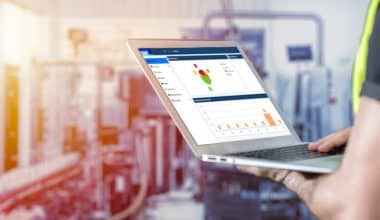Programming languages are used by computer programmers to create, test, and maintain code. Millions of people utilize the tools and software that these crucial technologists produce every day. They operate autonomously while working with bigger software teams. Programmers produce the instructions that engineers and software developers use to carry out operations on computers. Computer programmers can find work in a variety of areas as individuals and businesses become more reliant on technology. We will be dealing with the software and course under computer programming. Stay connected!
What Is Computer Programming
A computer program is made up of code that is run by the computer to carry out specific tasks. Programmers hence wrote the code in this document. Giving machines a set of instructions and outlining how a program should be executed is the process of programming. To properly create computer programs, programmers must spend their entire lives studying a range of programming languages and tools.
In the beginning, programmers will create source code using an IDE or code editor. This is a group of computer programs written in a language that other programmers can understand. In order for machines to comprehend the instructions and run the program, source code must also be translated into machine language. Compiling is the process of translating source code into machine language.
These computer programs let us communicate with a variety of software-based products and services, such as phones, websites, and computers.
History of Computer Programmers
In the past, computer programming was the purview of trained scientists and technologists. The field is now accessible to people of all ages and educational backgrounds. Computers and programming languages have their roots in the early 19th century. Charles Babbage and Ada Lovelace, two computing pioneers, opened the path for mid-20th century innovators like John Von Neumann, Grace Hopper, and John W. Backus.
Modern computer programming was preceded by source codes, machine language, and compiler languages. Along with newly developed programming languages like C in 1972, C++ in 1983, and Python in 1991, the field of computer programming expanded.
Major corporations like Microsoft and Apple developed software and applications using later languages like Java, C#, Swift, and JavaScript. Computer programmers benefited from expanding prospects in this setting.
Types of Programming Jobs
You have a wide variety of programming jobs to pick from. Only a few Jobs will be covered in this post.
#1. Web Developer
These programmers create web-based apps. They will work with a variety of languages, including HTML, CSS, JavaScript, PHP, and Python. There are many online courses available that you can take to educate yourself. Another option is to enroll in a boot camp, which requires months of diligent study. Although salaries will vary depending on region, they are typically well-paying jobs.
#2. Mobile Developer
These specialists create software for mobile devices. This will include React Native, Swift, Flutter, Java, and Kotlin among the programming languages. There are many online courses available that you can take to educate yourself. Although salaries will vary depending on region, they are typically well-paying jobs.
#3. Game Development
These programmers will create original video games for usage on PC, mobile, and gaming consoles. Among the programming languages are C++, C#, and Lua. These programmers will work for both big, multinational corporations like Sony and smaller, independent gaming studios. There are many online courses available that you can take to educate yourself. Although salaries will vary depending on region, they are typically well-paying jobs.
#4. Computer Systems Engineer
In order to work on sophisticated business software, this career integrates computer science and engineering. Python, Java, and C++ will all be used as programming languages. A formal bachelor’s degree in computer science would be the conventional educational path. The average salary will be in the six digits.
What Is Computer Programming Language and Types
Understanding the many types of programming languages will help you comprehend how computer programs are made and why particular languages are best suited for particular programs if you’re thinking about a career in computer programming or you simply want to pick up some new abilities. There are innumerable programming languages for computers, but some are more popular than others. Three of the most well-liked computer programming languages are listed below:
#1. HTML
The “Hyper Text Markup Language” abbreviation is used to code web pages. It identifies parts of a document, such as headings and paragraphs, and instructs a computer on how to display them.
#2. Java
Since the introduction of the World Wide Web, Java has been used to enhance websites and add interactive features like buttons and app widgets. It is frequently employed for programming mobile devices.
#3. C Language
The C programming language is used extensively to speed up programs and functions as a basic coding language. Since the two languages complement one another in terms of programming, it is still a common choice for video game developers who also utilize the C++ language.
Types of Programming Languages
Knowing these programming languages will help you stand out from the competition if you’re looking for work in computer programming or another area of technology. The following programming course languages are available for study:
#1. Procedural Languages
The data viewing range of a code statement serves as the foundation for procedural languages. Ada, BASIC, C/C++, and JavaScript are a few examples.
#2. Functional Languages
Recursive functions, which carry out a process and then repeat it to address any programming problems, are carried out by functional languages using stored data. Agda, Cuneiform, PureScript, and APL are a few examples.
#3. Machine Languages
Machine languages are composed of binary code, which is a string of 0s and 1s used to represent text or program instructions. Fortran is an illustration of a machine language.
#4. Assembly Languages
Similar to machine languages, assembly languages function by instructing the computer with brief mnemonic codes. Turbo Pascal and Lotus 1-2-3 are two examples.
#5. Logic Programming Languages
Developers’ assertions are constrained by logic programming languages, which prompt the computer to examine certain actions’ potential outcomes. Examples include Datalog, Prolog, and ASP.
#6. Data-oriented Languages
Different methods for searching and editing entity-relationship tables are available in data-oriented languages. Clarion, Gremlin, WebDNA, and Wolfram Language are a few examples.
#7. Business-oriented Languages
Businesses operate with massive amounts of data across numerous platforms using business-oriented languages. Instances include COBOL and SQL.
#8. Education-oriented Languages
Education-focused languages can assist novices who are not familiar with the procedures of teaching computer programming and coding. Examples include HyperTalk, Logo, and BASIC.
#9. Object-oriented Languages
The performance of an object-oriented language is dependent on shifting these “objects” to the appropriate locations after classifying everything it encounters as objects with internal and external data. Ruby, Python, Visual Basic.NET, and Java are some examples.
#10. Scripting Languages
Scripting languages are used to create operating system utilities and to handle lesser programming problems. Perl, PHP, JavaScript, and Python are among the examples.
#11. Declarative Languages
Declarative languages explain to a computer what must be done without giving specific instructions on how to do it. Given that they all assist a computer in solving programming problems, this kind of language can be categorized as either a logic programming language or a functional language. Examples include Haskell, ML, Lisp, and Prolog.
#12. Document Formatting Languages
Some document formatting languages work like word processors and organize printed text and visuals. Examples include SGML, TeX, and PostScript.
Computer Programming Software
A tool for writing computer code, which enables software to run, is programming software. The language used in the computer technology industry sometimes overlaps, which can be confusing. Computer software programming and software development are not the same thing. Programming is the carrying out of development directives, whereas development is the actual design of the program. The people who write software are called computer programmers. Hence, the list below is the list of programming software for a computer:
#1. Sublime Text
Popular text editors like Sublime Text can handle prose, code, and markup. It thus offers side minimaps for file structure and keyboard shortcuts for the majority of actions. It is a compact piece of Python and C/C++ software. Also, it can handle significantly more strenuous lifting before failing. And, its comprehensive editing is possible with a sound command palette.
#2. Visual Studio
The greatest coding program for building websites, web services, and mobile applications is Microsoft Visual Studio. Small and medium-sized companies generally use it to create computer programs. The integrated debugger, code refactoring, and IntelliSense (context-aware code completion), which may also serve as both a machine-level and a source-level debugger, are all features of the code editor.
#3. Xcode
With Xcode and Swift software (an Apple Inc. multi-paradigm language), computer programming is a pleasantly live experience. The finest feature of Xcode is thus how easily you can drag and drop an element into place to finish your design.
#4. IntelliJ IDEA
Programming is made simpler by the numerous capabilities and customizations that IntelliJ IDEA, a Java application, offers. Its intelligent code completion for numerous languages, support for the microservices framework, and integrated developer tools like version control and a terminal, however, makes it the greatest coding software. One of the most flexible IDEs is IntelliJ IDEA, which can also handle everything from backend Java to frontend JavaScript apps.
#5. AWS Cloud9
With AWS Cloud9, you can write, run, and debug source code using a web browser. You don’t need to install files or set up the development computer to start new projects. It, therefore, contains every software required for well-known computer programming languages. You may specify resources, debug serverless applications, and switch between remote and local execution using the platform. Additionally, you may pair code, work on projects together, and view your team’s progress in real-time.
Computer Programming Course
To offer any of the computer programing course, it’s straight-way knowledge to know everything about it. Below is the list of programming course to offer in computer training.
#1. IBM Data Analyst
Excel and spreadsheet skills should be used to conduct a variety of data analysis activities, such as data wrangling and data mining. Build dashboards with IBM Cognos Analytics and numerous Excel charts and plots. Utilize Python packages like Matplotlib to visualize data. Learn the basics of Python so you can use libraries like Pandas and Numpy to analyze data and call APIs and Web Services. Explain the data ecology. create queries in Jupyter Notebooks that use SQL and Python to access data in cloud databases.
#2. Google Data Analytics
Get a thorough understanding of the procedures and methods that a junior or associate data analyst uses on a daily basis. Learn the fundamental analytical techniques (data cleaning, analysis, and visualization), as well as the necessary software (spreadsheets, SQL, R programming, Tableau). Know how to prepare data for analysis, clean and organize it for analysis, and perform computations using spreadsheets, SQL, and R programming. Learn how to show data insights using visualization platforms that are routinely used in dashboards, presentations, and other formats.
#3. Introduction to Programming with Python and Java
Describe the fundamentals of Python programming, such as setting up tools for Python code and creating fully-functional applications using data structures. Learn how to use Python to examine fundamental data science topics and practices, such as employment data analysis packages and mastering data visualization. Write completely functioning programs utilizing classes and methods while adhering to the fundamentals of Java and object-oriented programming, as well as unit testing. Apply strategies for processing text in files, storing data in complex data structures, and debugging programs while understanding Java inheritance.
#4. IBM Back-End Development
Learn the most recent knowledge and practical skills that back-end developers utilize on a daily basis. Learn how to scale and deploy applications utilizing serverless functions, microservices, Docker, and Kubernetes. Use version control and package management to create back-end programs utilizing object-oriented programming languages, such as server-side Python. Use monitoring and continuous integration/continuous development (CI/CD) approaches to help automate the software development lifecycle.
#5. Programming Fundamentals
Whether you want a job in software development or something else entirely, programming is a talent that is becoming more and more crucial. The first course is the introduction to programming in the C specialty, but its concepts apply to any language you would desire to learn. This is due to the fact that programming is primarily about creating an algorithm—a concise collection of instructions—that can be used to solve any problem in a given class. The Seven Steps, a potent approach to problem-solving that you may apply to address any programming issue, will be covered in this course. You will learn how to create an algorithm in this course, after which you will advance to reading code and comprehending how programming ideas connect to algorithms.
How to Start Learning Programming?
Introduction to Coding:
- Determine your motivation for coding education.
- Select the programming language you want to master first.
- Take classes online.
- Watch instructional videos.
- Learn via books and ebooks.
- Make learning to code easier by using the right tools.
- Look at other people’s coding styles.
- finalize your code tasks.
Is HTML a Programming Language?
Not being a programming language, HTML. A markup language is used. In fact, that is the name of the technology.
What Is the Difference Between Coding and Programming?
Writing codes that a machine can understand is the focus of the programming activity known as coding. The process of programming involves approving codes to develop programs.
Which Programming Language Should I Learn First as a Beginner?
Both Python and Java are among the most widely used general-purpose, object-oriented programming languages, however, due to Python’s easier syntax and usability, beginners tend to find it easier to learn than Java.
How Do You Program a Code?
The following are the general steps for writing a program:
- Recognize the issue you’re attempting to resolve.
- Make a plan of action.
- Sketch a flowchart.
- Construct pseudocode.
- Make code.
- Debug and test.
- Test with actual customers.
- release strategy.
Related Posts
- SCRIPTING LANGUAGE: Its Example (Java and Python).
- BEST WEBSITE TO LEARN CODING FOR BEGINNERS IN 2023
- TOP 20+ DATA ANALYTICS SOFTWARE in 2023
- FREELANCE DEVELOPER: All You Should Know About It and How to Start Freelancing






